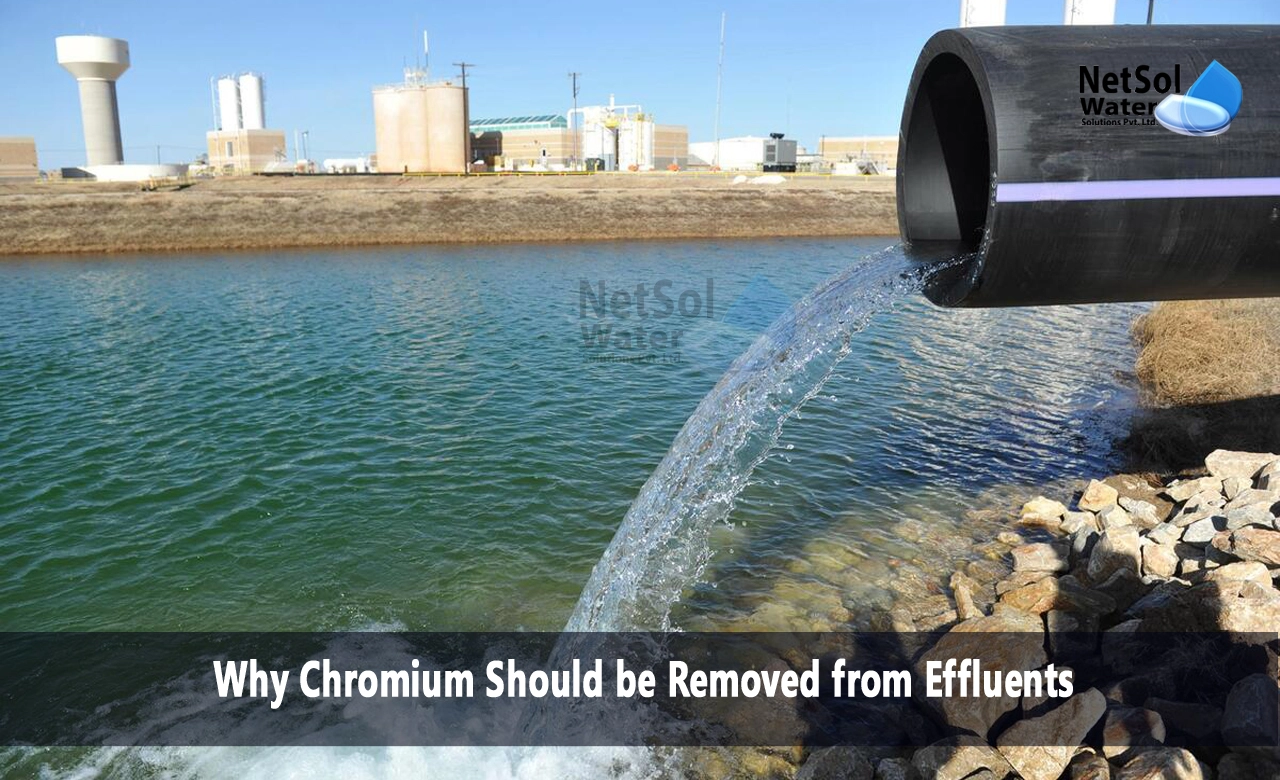In today's industrialized world, the discharge of effluents containing heavy metals like chromium has become a significant environmental concern. Chromium, a transition metal widely used in various industries, can exist in different oxidation states, with trivalent chromium being relatively stable and less toxic, while hexavalent chromium is highly toxic, carcinogenic, and mutagenic. Effluents contaminated with chromium pose severe risks to human health and the environment, making it crucial to implement effective chromium removal strategies.
Why Chromium Should be Removed from Effluents?
The presence of chromium, particularly in its hexavalent form, in effluents can have devastating consequences on both human health and ecological systems. Here are some compelling reasons why chromium removal from effluents is essential:
1. Human Health Risks: Exposure to hexavalent chromium can lead to various health issues, including respiratory problems, skin rashes, stomach upset, ulcers, kidney and liver damage, and even lung cancer. Ingestion or inhalation of chromium-contaminated water or air can have severe long-term effects on human health.
2. Environmental Degradation: Chromium discharged into water bodies can accumulate in aquatic organisms, disrupting the delicate balance of ecosystems. It can also contaminate soil, affecting plant growth and posing risks to terrestrial organisms that depend on the soil for sustenance.
3. Regulatory Compliance: Most countries have stringent regulations and guidelines in place regarding the permissible levels of chromium in effluents discharged into water bodies or the environment. Failure to comply with these regulations can result in hefty fines and legal consequences for industries and organizations.
4. Sustainable Development: Chromium removal from effluents aligns with the principles of sustainable development, ensuring that industrial activities do not compromise the ability of future generations to meet their needs. It promotes responsible resource management and environmental stewardship.
Processes Involved in Chromium Removal from Effluents
Various techniques and processes have been developed and employed to effectively remove chromium from effluents. The choice of method depends on factors such as the initial chromium concentration, the desired final concentration, the volume of effluent, and the treatment cost. Here are some commonly used processes for chromium removal:
1. Chemical Precipitation
Chemical precipitation is one of the most widely used methods for chromium removal from effluents. It involves the addition of coagulants and precipitants, such as ferrous sulfate, sodium hydroxide, or calcium hydroxide, to the effluent. These chemicals react with chromium ions, forming insoluble precipitates that can be removed through sedimentation, filtration, or flotation processes.
2. Ion Exchange
Ion exchange is a versatile process that involves the exchange of chromium ions present in the effluent with ions of a similar charge from an ion exchange resin. The resin is designed to selectively attract and bind chromium ions, effectively removing them from the effluent. Once the resin becomes saturated, it can be regenerated or replaced.
3. Adsorption
Adsorption is a surface phenomenon where chromium ions are attracted and bound to the surface of a solid adsorbent material. Various adsorbents, such as activated carbon, zeolites, clays, and biosorbents (e.g., agricultural wastes or biomass), have been explored for chromium removal from effluents. The efficiency of the adsorption process depends on factors like the adsorbent's surface area, pore size distribution, and the pH of the effluent.
4. Membrane Filtration
Membrane filtration processes, including reverse osmosis, nanofiltration, and ultrafiltration, can effectively remove chromium from effluents. These processes involve the selective separation of chromium ions from the effluent stream by passing it through semi-permeable membranes. The membranes act as barriers, allowing the passage of water molecules while retaining chromium ions and other contaminants.
5. Electrochemical Treatment
Electrochemical treatment methods, such as electrocoagulation and electrochemical oxidation, have gained popularity for chromium removal from effluents. These processes involve the application of an electric current to the effluent, resulting in the formation of coagulants in-situ or the oxidation of chromium ions to less toxic or insoluble forms, which can be subsequently removed through sedimentation or filtration.
6. Biological Treatment
Biological treatment methods employ microorganisms or plants to remove chromium from effluents. Certain bacteria, fungi, and algae have the ability to accumulate or transform chromium ions through processes like biosorption, bioaccumulation, or bioconversion. These methods are often cost-effective and environmentally friendly, but their efficiency may vary depending on the effluent characteristics and the specific microorganisms or plants used.
Conclusion
The removal of chromium from effluents is a critical requirement for industries and organizations to ensure environmental protection and regulatory compliance. Various processes, including chemical precipitation, ion exchange, adsorption, membrane filtration, electrochemical treatment, and biological treatment, have been developed and employed to effectively remove chromium from effluents. The choice of method depends on factors such as the initial chromium concentration, the desired final concentration, the volume of effluent, and the treatment cost.
Implementing effective chromium removal strategies not only mitigates the risks associated with chromium exposure but also promotes sustainable development and environmental stewardship. Continuous research and innovation in chromium removal technologies will further enhance the efficacy and cost-effectiveness of these processes, ensuring a cleaner and safer environment for future generations.
Netsol Water is Greater Noida-based leading water & wastewater treatment plant manufacturer. We are industry's most demanding company based on client review and work quality. We are known as best commercial RO plant manufacturers, industrial RO plant manufacturer, sewage treatment plant manufacturer, Water Softener Plant Manufacturers and effluent treatment plant manufacturers. Apart from this 24x7 customer support is our USP. Call on +91-9650608473, or write us at enquiry@netsolwater.com for any support, inquiry or product-purchase related query.



